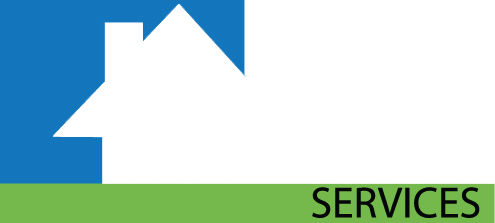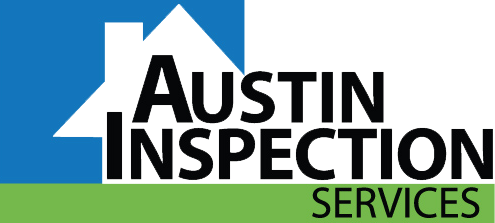Mold Information
So what is Mold?
Quite simply, molds are fungi. Molds grow throughout the natural and built environment. Tiny particles of mold are present in indoor and outdoor air. In nature, molds help break down dead materials and can be found growing on soil, foods, plant matter, and other items. Molds produce microscopic cells called “spores” which are very tiny and spread easily through the air. Live spores act like seeds, forming new mold growths (colonies) when they find the right conditions.
What does mold need to grow?
Mold only needs a few simple things to grow and multiply
- Moisture. A damp environment, like a bathroom wall or basement are ideal places.
- Nutrients
- Suitable space to grow
Of these, controlling excess moisture is the primary key to preventing and stopping indoor mold growth.
Should I be concerned about mold in my home?
Health Effects caused by mold
What symptoms might I see?
The most common health problems caused by indoor mold are allergy symptoms. Although other and more serious problems can occur, people exposed to mold commonly report problems such as
- Nasal and sinus congestion
- Cough
- Wheeze/breathing difficulties
- Sore throat
- Skin and eye irritation
- Upper respiratory infections (including sinus)
Are the risks greater for some people?
There is wide variability in how different people are affected by indoor mold. However, the long term presence of indoor mold growth may eventually become unhealthy for anyone. The following types of people may be affected more severely and sooner than others
- Infants and children
- Elderly people
- Individuals with respiratory conditions or sensitivities such as allergies and asthma
- Persons having weakened immune systems (for example, people with HIV infection, chemotherapy patients, organ transplant recipients)
Those with special health concerns should consult a medical professional if they feel their health is affected by indoor mold.
Home Investigation
Mold Clean-up and Removal
To clean up and remove indoor mold growth, follow steps 1-6 as they apply to your home.
1. Identify and Fix the Moisture Problem – the most important step in solving a mold problem is to identify and correct the moisture sources that allowed the growth in the first place. Common indoor moisture sources include:
- Flooding
- Condensation (caused by indoor humidity that is too high or surfaces that are too cold)
- Movement through basement walls and slab
- Roof leaks
- Plumbing leaks
- Overflow from tubs, sinks, or toilets
- Firewood stored indoors
- Humidifier use
- Inadequate venting of kitchen and bath humidity
- Improper venting of combustion appliances
- Failure to vent clothes dryer exhaust outdoors (including electric dryers)
- Line drying laundry indoors
- House plants – watering them can generate large amounts of moisture
2. Begin Drying All Wet Materials – as soon as possible, begin drying any materials that are wet. For severe moisture problems, use fans and dehumidifiers and move wet items away from walls and off floors. Check with equipment rental companies or restoration firms to see if you can rent fans and dehumidifiers.
3. Remove and Dispose of Mold Contaminated Materials – items which have absorbed moisture (porous materials) and which have mold growing on them need to be removed, bagged and thrown out. Such materials may include sheet rock, insulation, plaster, carpet/carpet pad, ceiling tiles, wood products (other than solid wood), and paper products. Likewise, any such porous materials that have contacted sewage should also be bagged and thrown away. Non-porous materials with surface mold growth may be saved if they are cleaned well and kept dry (see step 4).
- Take Steps to Protect Yourself – the amount of mold particles in air can increase greatly when mold is disturbed. Consider using protective equipment when handling or working around mold contaminated materials. The following equipment can help minimize exposure to mold:
- Rubber gloves
- Eye goggles
- Outer clothing (long sleeves and long pants) that can be easily removed in the work area and laundered or discarded
- Medium-efficiency or high-efficiency filter dust mask (these can be found at safety equipment suppliers, hardware stores, or some other large stores that sell home repair supplies) — at a minimum, use an N-95 or equivalent dust mask
- Take Steps to Protect Others – plan and perform all work to minimize the amount of dust generated. The following actions can help minimize the spread of mold spores:
- Enclose all moldy materials in plastic (bags or sheets) before carrying through the home
- Hang plastic sheeting to separate the work area from the rest of the home
- Remove outer layer of work clothing in the work area and wash separately or bag
- Damp clean the entire work area to pick up settled contaminants in dust
4. Clean Surfaces – surface mold growing on non-porous materials such as hard plastic, concrete, glass, metal, and solid wood can usually be cleaned. Cleaning must remove and capture the mold contamination, because dead spores and mold particles still cause health problems if they are left in place.
- Thoroughly scrub all contaminated surfaces using a stiff brush, hot water and a non-ammonia soap/detergent or commercial cleaner
- Collect excess cleaning liquid with a wet/dry vacuum, mop or sponge
- Rinse area with clean water and collect excess rinse water
5. Disinfect Surfaces (if desired) – after cleaning has removed all visible mold and other soiling from contaminated surfaces, a disinfectant may be used to kill mold missed by the cleaning. In the case of sewage contamination, disinfection must be performed. Contact your home inspector for advice.
- Mix 1/4 to 1/2 cup bleach per gallon of water and apply to surfaces where mold growth was visible before cleaning. The solution can be applied with a spray bottle, garden sprayer, it can be sponged on, or applied by other methods.
- Collect any run-off of bleach solution with a wet/ dry vacuum, sponge or mop. However, do not rinse or wipe the bleach solution off the areas being treated — allow it to dry on the surface.
6. Remain on Mold Alert – Continue looking for signs of moisture problems or return of mold growth. Be particularly alert to moisture in areas of past growth. If mold returns, repeat cleaning steps and consider using a stronger solution to disinfect the area again. Regrowth may signal that the material should be removed or that moisture is not yet controlled.

